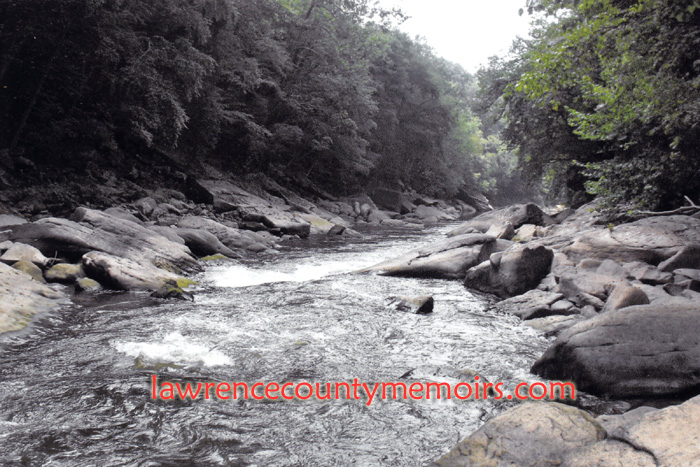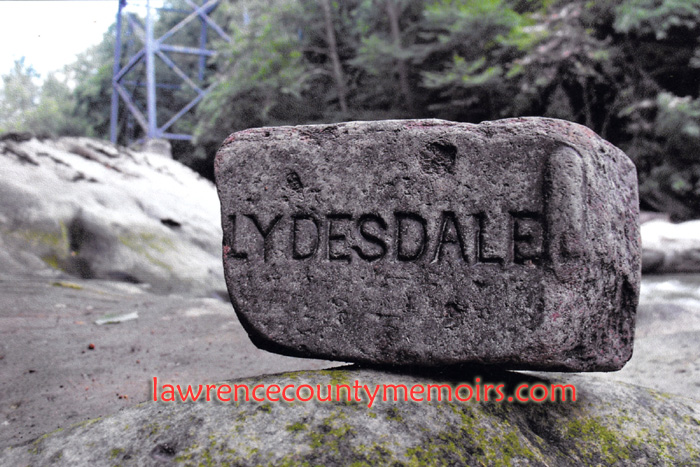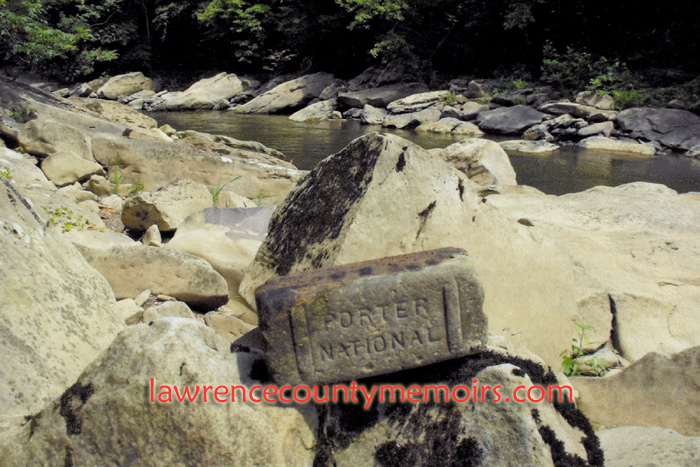In the late 1880’s, Henry Waters Hartman, a wealthy industrialist and steel man from Beaver Falls, Pennsylvania, envisioned starting a manufacturing center and town on a plateau along the Connoquenessing Creek near the southeast corner of Lawrence County. In 1889 he resurrected a dormant land venture outfit as the Pittsburg Company and set about purchasing large plots of property in the area. In 1892 he named his new settlement Ellwood (later Ellwood City) in honor of his friend Isaac L. Ellwood, a pioneering force in the manufacture of barbed wire.
A big boast to his venture was the fact that plans were being formulated by the Baltimore & Ohio Railroad (B&O) to run a new track route through the same area. The B&O bought a controlling interest in the Pittsburgh & Western Railroad (P&W) in 1884 and worked out an agreement to use its Pittsburgh-New Castle right of way to expand its route to distant Chicago.
The P&W route through Frisco-Wurtemburg-Hazel Dell (around the general area that became known as Ellport) was hilly terrain and not suited to easy travel by long columns of trains. In the late 1880’s the B&O decided to bypass that hilly terrain by building a direct shortcut from Frisco – through the area that became Ellwood City – to reconnect with the main P&W line above Rock Point. This called for building a bridge across the Connoquenessing Creek at Frisco, boring a tunnel through the hillside on the opposite bank, running track across the wide plateau, and building a second bridge across the Connoquenessing near Park Gate.
Construction of the two single-track railroad bridges and the tunnel started in about late 1889. See the page of ELLWOOD CITY – Frisco Railroad Bridge & Ellwood Tunnel for more details on the effort. The towering bridge over the Connoquenessing River west of Ellwood City, near what became Park Gate, was completed by July 1891. On Thursday, July 23, 1891, the first eastward-moving train passed through the Ellwood Tunnel and the newly-completed shortcut, totaling about three miles long and known as the Ellwood Short Line, was put in operation.
By the early 1900’s both of the railroad bridges were slated for upgrade and/or replacement. The Pennsylvania Steel Company, organized in 1865 in Steelton, Pennsylvania, was contracted to build the new two-track standard gauge span west of Ellwood City. The extensive works of the company located near Harrisburg were later acquired by the Bethlehem Steel Company in 1916. I’m not sure if the same company took part in the construction of the new bridge at Frisco, but I’ll try to determine that in the future.
It appears an entirely new span was erected just beside (to the north) of the bridge built in 1891. A heavy-duty placard affixed to the bridge’s frame reads, “BUILT BY PENNSYLVANIA STEEL CO. STEELTON, PA. 1907.” I believe the new bridge as well as its companion span at Frisco were completed and in operation sometime in 1909. A few years later, in 1912, the P&W was dissolved and its assets – including the bridges at Ellwood – were officially absorbed into the operations of the B&O.
The railroad bridge at West Ellwood, now over 100 years old, is still in use today. The borough of Ellwood City is not the hotbed of railroading activity it once was, but freight trains of the regional Buffalo & Pittsburgh Railroad (BPRR) – passing between Butler and New Castle – still rumble across the old bridge once or twice daily.
 A postcard showing the railroad bridge with the additional supports visible. Later photos of the bridge show a flat deck-style span with none of the support beams at all. (c1905) Full Size |
 The B&O railroad bridge west of Ellwood City is sometimes referred to as the “High Bridge” – and with good reason! (c1910) Full Size |
 Looking northward from atop the bridge. (Aug 2011) |  A small platform atop the bridge has seen its better days. I would not venture near that! (Aug 2011) |
 (Mar 2012) Full Size |
 The view from alongside the western side of the bridge. (Aug 2011) |  Looking through the supports of the western end of the bridge. (Aug 2011) |
 Standing at the side of the western end of the bridge. (Aug 2011) |
 The placard attached to the base of the western end of the bridge. (Aug 2011) |  The terrain encountered while climbing down to the river from the western end of the bridge is formidable. (Aug 2011) |
 (Mar 2012) Full Size |
 One of the old concrete support bases for the bridge. (Aug 2011) |  The old bridge towers above the Connie Creek. (Aug 2011) |
 Looking skyward. (Aug 2011) |  (Aug 2011) |
 (Aug 2011) |  (Aug 2011) |  (Aug 2011) |
 There’s my missing bike! (Aug 2011) |
 Looking southward and away from the bridge. (Aug 2011) |  The shoreline at this location is extremely rocky and dangerous. (Aug 2011) |
 The railroad bridge, spanning high above the Connoquenessing Creek, essentially sits in a secluded spot at the western end of Commercial Avenue in Ellwood City. (c2012) Full Size |














Comments
Vicki Sqires #
we found some old bricks that have the companys name inlaid in the bricks The names on the bricks are
Wellsville Salvage.
Welch
viking
and some other intresting names.
I was just wondering if they have any money value or if collectors would be intrested in looking at them.
Please let me know my number is (816)872-7637 Thank You,
Vicki Squires
Comment